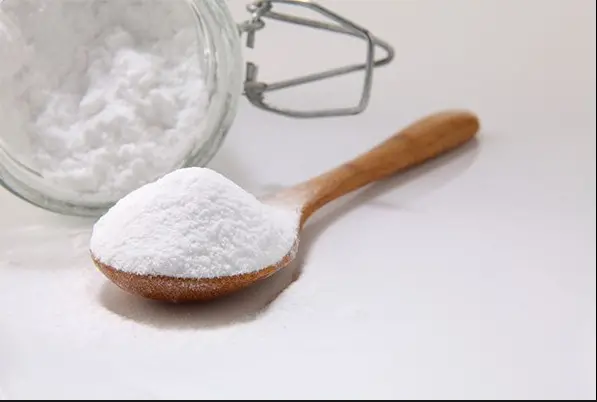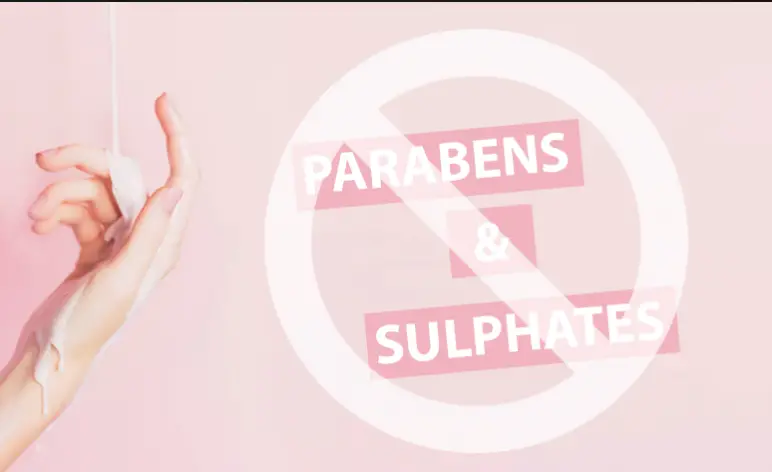In the vast world of cosmetic products, consumers are often faced with ingredient lists that are hard to decipher. Among these, parabens, sulfates, and phthalates frequently appear, sparking debates about their safety and use. Each of these chemicals serves specific functions in beauty and personal care products, from preservatives to solvents and foaming agents.
Parabens, sulfates, and phthalates are distinct compounds with unique properties and uses. Parabens are widely used as preservatives to prevent the growth of harmful bacteria and fungi in cosmetics. Sulfates are effective surfactants that create lather and remove oil and dirt. Phthalates are used to increase the flexibility and longevity of fragrances. Despite their functional benefits, each of these ingredients has raised health and environmental concerns, leading to increased scrutiny and regulation.
These compounds not only differ in their chemical makeup and applications but also in the risks they pose to consumers and the environment. Their presence in everyday products makes it essential for consumers to understand their effects, encouraging informed choices in the cosmetics they purchase.

Cosmetic Additives Overview
Definition and Purpose
Cosmetic additives are chemical substances used in a variety of beauty and personal care products. Their primary purpose is to enhance product performance, extend shelf life, and improve user experience. Additives can serve various roles such as preservatives, emulsifiers, colorants, and fragrances, each contributing to the product’s appeal, safety, and effectiveness.
Common Types in Products
The most frequently encountered types of additives in cosmetics include:
- Parabens: Used for their preservative properties to prevent the growth of microbes.
- Sulfates: Act as surfactants that help with cleaning and forming lather.
- Phthalates: Used to increase the durability and flexibility of cosmetics.
- Silicones: Provide a smooth texture and moisture barrier in skincare products.
- Colorants and dyes: Enhance the visual appeal of cosmetics.
- Fragrances: Improve the scent of products to enhance user experience.
Parabens Explained
Chemical Characteristics
Parabens are a group of synthetic compounds known chemically as alkyl esters of p-hydroxybenzoic acid. Common parabens include methylparaben, propylparaben, and butylparaben. They are widely recognized for their ability to effectively prevent the growth of fungi, bacteria, and yeast, thereby protecting the product and user from spoilage and infections.
Uses in Cosmetics
Parabens are utilized in an extensive array of cosmetic products, including:
- Face and body creams: To prevent microbial growth and maintain product integrity.
- Shampoos and conditioners: As a preservative to prolong shelf life.
- Makeup items: To maintain freshness and prevent contamination.
Safety and Health Impacts
Although parabens are effective preservatives, their safety has been a topic of debate due to studies suggesting potential links to endocrine disruption and reproductive issues. Regulatory bodies like the FDA continue to assess the safety levels of parabens in cosmetic products to ensure consumer safety.
Sulfates Overview
Definition and Common Forms
Sulfates are chemicals used primarily as detergents and surfactants. Among the most common are sodium lauryl sulfate (SLS) and sodium laureth sulfate (SLES). These compounds are known for their exceptional ability to remove dirt and oil, making them popular in cleansing products.
Role in Cosmetic Products
In cosmetic formulations, sulfates perform crucial roles such as:
- Creating lather: Enhancing the user experience in soaps and shampoos.
- Removing oils and residues: Ensuring effective cleansing of skin and hair.
- Emulsifying fats and oils: Allowing water to mix with oils and dirt for easier rinsing.
Health and Environmental Concerns
Concerns about sulfates include potential skin irritation and dryness, particularly for sensitive skin types. Environmental worries stem from the biodegradability of sulfates and their potential to harm aquatic life.
Phthalates Detailed
Chemical Structure
Phthalates, or phthalate esters, are a group of chemicals derived from phthalic acid. These compounds are primarily used to soften and increase the flexibility of plastics in cosmetic formulations.
Application in Beauty Products
Phthalates are incorporated into cosmetics for various purposes, including:
- Enhancing fragrance longevity: Making scents last longer in products like perfumes and lotions.
- Improving product texture: Providing a smoother consistency in creams and gels.
Risks Associated with Use
The use of phthalates has raised significant health concerns due to studies indicating possible associations with hormonal disruptions and reproductive health issues. The use of certain phthalates has been restricted in cosmetic products within the European Union and other regions due to these potential risks.

Comparative Analysis
Differences in Chemical Properties
Parabens, sulfates, and phthalates, while all common in personal care products, exhibit unique chemical properties that influence their functionality and potential health effects. Parabens are esters of para-hydroxybenzoic acid and vary primarily in the length of their alkyl group, affecting their solubility and antimicrobial potency. Sulfates, such as sodium lauryl sulfate, are characterized by their sulfate group attached to fatty alcohols, contributing to their effective surfactant properties. Phthalates consist of phthalic acid diesters and are primarily used to soften plastics but have been adapted in cosmetics for their ability to stabilize fragrances and increase spreadability.
Varied Uses in Products
The applications of these additives in beauty and personal care products also vary:
- Parabens are predominantly used as preservatives in a wide range of cosmetics from moisturizers to makeup, preventing bacterial and fungal growth.
- Sulfates are valued for their ability to emulsify and foam, making them essential in cleansers, shampoos, and toothpastes.
- Phthalates are often used to enhance the longevity of fragrances in products and to improve the texture of nail polishes and hair sprays.
Distinct Health Concerns
Each compound group carries its own health concerns. Parabens have been associated with endocrine disruption, potentially influencing hormone functions and reproductive health. Sulfates can cause skin and eye irritation, particularly in individuals with sensitive skin or allergies. Phthalates have been linked to reproductive issues and endocrine disruption, raising significant concerns about their safety, particularly in products used frequently and over extended periods.
Industry Standards
Regulations on Usage
The cosmetic industry is governed by various international regulations that dictate the use of these chemicals:
- In the United States, the FDA monitors cosmetic products but does not require pre-market approval. However, parabens, sulfates, and phthalates must be listed on product labels.
- The European Union has stricter regulations, with outright bans on certain types of phthalates in cosmetics and stringent limits on paraben concentrations.
Guidelines by Health Organizations
Health organizations globally, including the World Health Organization (WHO) and the International Agency for Research on Cancer (IARC), continue to study and provide guidelines on the safe use of cosmetic additives. Their findings often influence regulatory changes and consumer safety guidelines.
Consumer Choices
Alternative Ingredients
As consumer awareness increases, the demand for safer, more natural alternatives has grown. Manufacturers are turning to other substances that provide similar benefits without the associated risks. Alternatives include:
- Ethylhexylglycerin and phenethyl alcohol as preservatives, instead of parabens.
- Coco-glucoside and decyl glucoside as sulfate-free surfactants.
- Isoamyl laurate and diheptyl succinate as replacements for phthalates in scent and texture enhancement.
Labels and What to Look For
Understanding labels is crucial for consumers aiming to avoid specific additives. Key tips include:
- Check ingredient lists: Ingredients are listed in descending order of concentration. Look for names like methylparaben, propylparaben, sodium lauryl sulfate, and dibutyl phthalate.
- Look for certifications: Products certified as “organic” or “natural” often avoid synthetic additives, though standards can vary.
- Be wary of claims: Terms like “free from” or “non-toxic” are not regulated and can be misleading. Trust products with clear, transparent labeling practices.
Frequently Asked Questions
What are parabens?
Parabens are a group of synthetic compounds commonly used as preservatives in the cosmetic industry. They help extend the shelf life of products by preventing microbial growth, thereby protecting both the product and the user from potential harm.
Why are sulfates used in shampoos?
Sulfates are used in shampoos for their ability to create a rich lather that effectively cleanses the hair and scalp by removing oils, dirt, and buildup. Their strong cleansing properties make them a popular choice in hair care formulations.
Are phthalates dangerous?
Phthalates are chemicals used to enhance the flexibility and durability of plastics in cosmetic products. They have come under scrutiny due to studies suggesting potential health risks, including hormonal disruptions and increased risk of certain cancers, leading to regulatory reviews and restrictions in some countries.
How can I avoid these chemicals?
To avoid parabens, sulfates, and phthalates, consumers should read product labels carefully and look for certifications that indicate a product is free from these chemicals. Choosing products labeled as “paraben-free,” “sulfate-free,” or “phthalate-free” can help minimize exposure.
Conclusion
Understanding the differences between parabens, sulfates, and phthalates is crucial for making safer, more sustainable choices in cosmetic and personal care products. By being aware of the roles these chemicals play and the potential risks they carry, consumers can better navigate the complex landscape of product ingredients.
As the cosmetic industry evolves, alternative ingredients that are safer for both human health and the environment are becoming more prevalent. Consumers now have the opportunity to choose products that align with their health priorities and values, empowering them to take control of their beauty routines.

